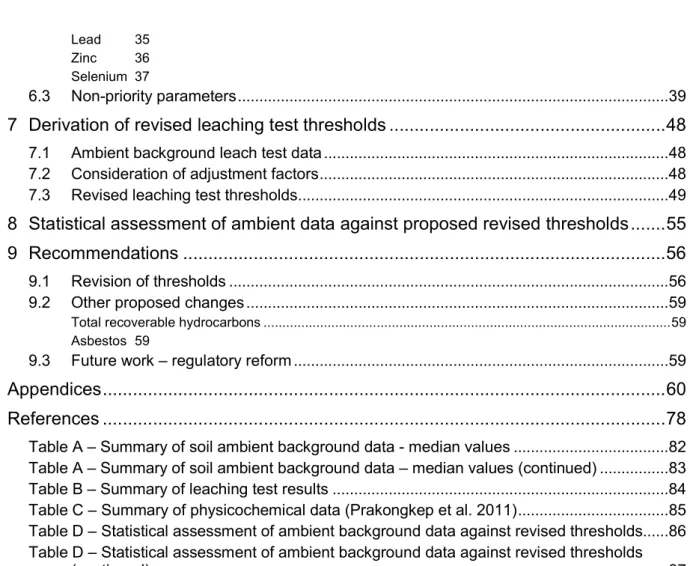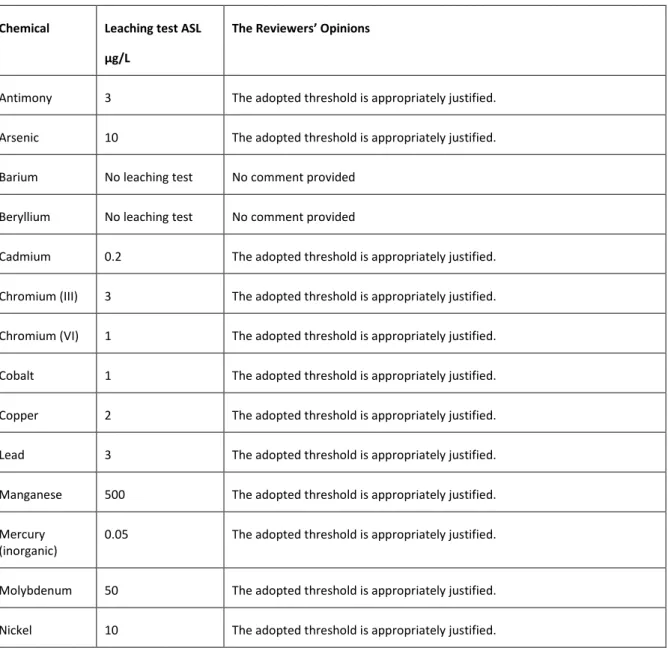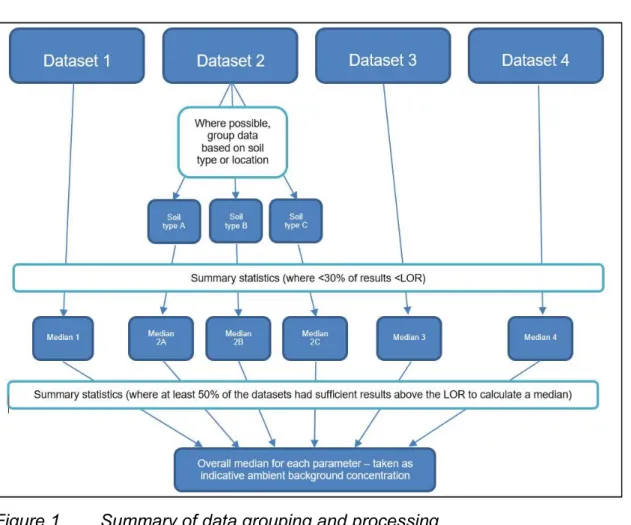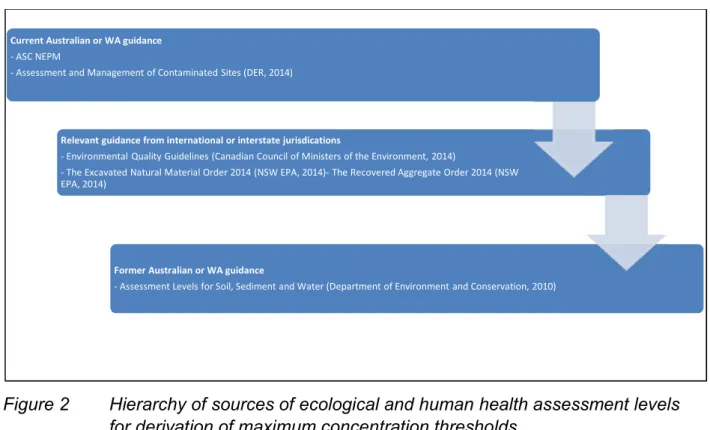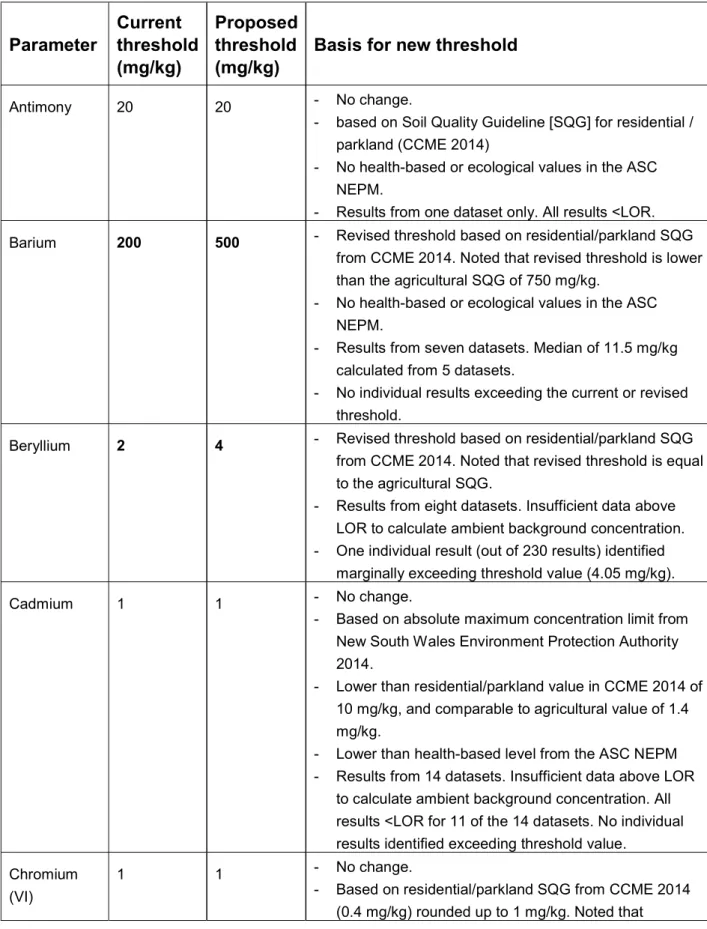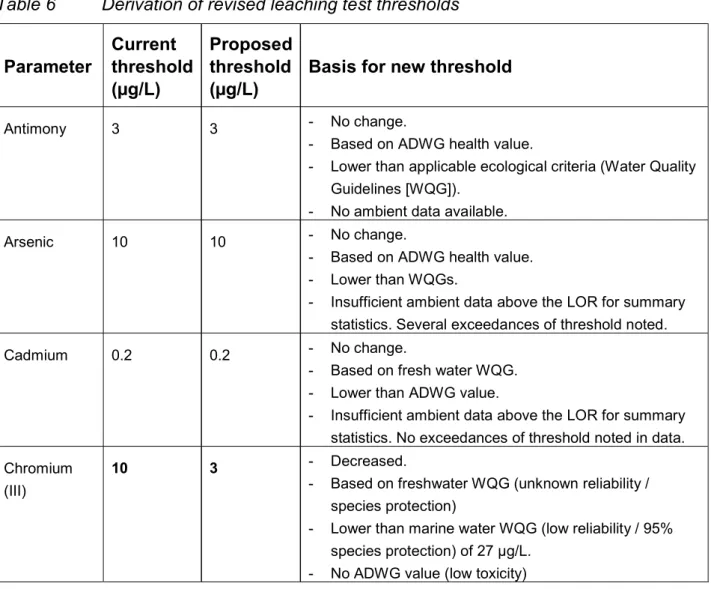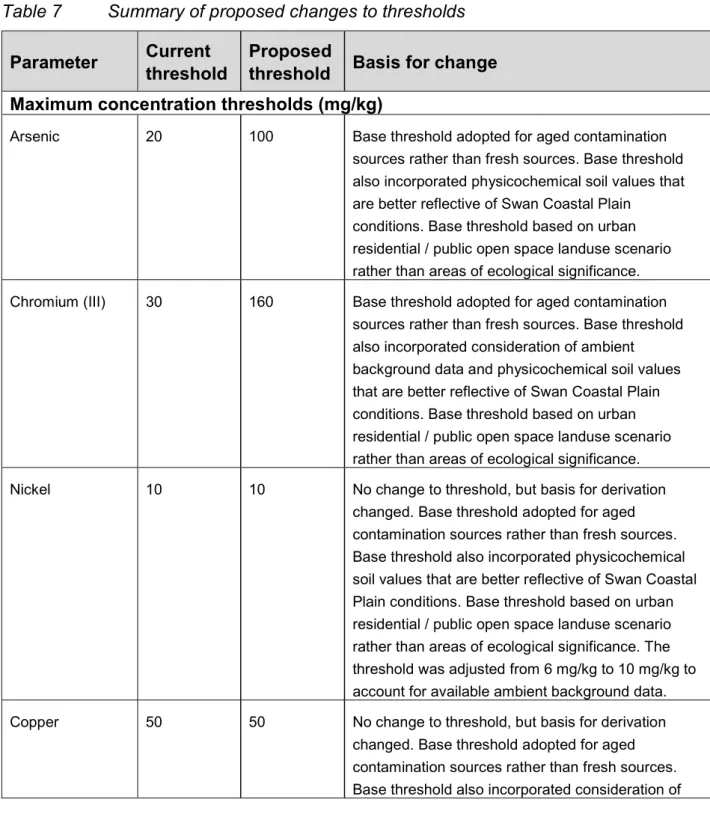The changes were supported by the publication of the Landfill Waste Classification and Waste Definitions 1996 (amended 2018) (Waste Definitions), which contain pollutant limits (total and leach values) for uncontaminated fill (the thresholds). The Department of Water and Environmental Regulation (DWER) has been requested by the WA Minister of the Environment to conduct an advisory and technical review of the thresholds. The reviewers above have previously provided an independent review of the DWER report entitled Draft Report (V5) Review of the Uncontaminated Fill Thresholds Shown in Table 6 of the Landfill Waste Classification and Waste Definitions 1996 (as amended 2018), dated April 2019, and documented the review in an earlier version of this document1.
This current report provides an independent review of the draft WA DWER report (V6) dated August 2019. 1 Independent review of the report prepared by the Department of Water and Environmental Regulation entitled Draft Report (V5) Review of the unpolluted fill thresholds presented in Table 6 of the landfill waste.
Definitions
The limitations of the existing legislative framework must be taken into account in the preparation of this Joint Review Report. Except in special situations, both clean fill and uncontaminated fill may be used at any location in Western Australia without payment of a landfill charge.
Uncontaminated Fill
Other Jurisdictions
Based on the use of the current data set, using the median will not significantly affect the thresholds. Most data sets have only limited samples (between 1 and 10, some have only 1 to 3 samples). The Department of Water and Environmental Regulation conducted an advisory technical review of the thresholds for uncontaminated fill between November 2018 and August 2019.
Do you have data representative of typical environmental conditions for Swan Coastal Plain soils? It is acknowledged that derivation of statistically or scientifically significant default ambient background concentrations representative of the Swan Coastal Plain was not possible. It is recognized that limit values developed based on consideration of environmental concentrations in the Swan Coastal Plain may not be reflective.
Where appropriate, the thresholds have been adjusted to reflect typical ambient background concentrations across the diverse soils of the Swan Coast Plain. 2011, Mineralogy and chemistry of sandy acid sulphate soils in the Perth metropolitan area of the Swan Coastal Plain”. The main focus of the review was on the maximum concentration thresholds for natural metals based on the consideration of environmental background data.
Four of the current thresholds are derived based on the SRAECO values (barium, beryllium, cobalt and vanadium). However, in four of the available datasets the baseline threshold of 6 mg/kg is exceeded. Based on ESL for coarse soils in areas of urban living and public open space from Scheme B1 of the ASC NEPM.
Based on Health-Investigation Level (HIL) for residential areas with accessible soils from Schedule B1 of the ASC NEPM. Based on HIL for residential areas with accessible soils from schedule B1 of the ASC NEPM. Based on nutrient concentration targets in tributaries of the Swan Canning River System (Swan River Trust 2008).

Derivation of Clean Fill Guidelines
NEPM
The framework is based on a matrix of human health and ecological soil and groundwater studies and screening levels and guidance for specific pollutants. Investigation levels and screening levels are the concentrations of a contaminant above which further appropriate investigation and evaluation will be required. A Tier 1 assessment is a risk-based analysis that compares site data to generic survey and screening levels for various land uses to determine the need for further assessment or development of an appropriate.
Health Screening Levels (HSLs) have been developed for selected petroleum compounds and fractions and are applicable to assessing risks to human health through inhalation and direct contact. Other levels of screening have maximum depths, while the HSLs are designed for different depth categories.
Documents Reviewed
HSLs depend on specific soil physico-chemical properties, land use scenarios and characteristics of building structures. The NEPM advises that the site assessment should consider the risks from contaminated groundwater to all potential receptors inside and outside the site of origin and potential effects on groundwater resources. Groundwater investigation levels (GILs) are based on the Australian Water Quality Guidelines 2000 (AWQG), the Australian Drinking Water Guidelines 2011 (ADWG) and the Guidelines for Risk Management in Recreational Waters 2008 (GMRRW)2.
The GIRLs have been adopted in the NEPM as survey levels under the framework for risk-based assessment of groundwater pollution, i.e.
Guidelines
Review Methodology
DWER (Apr 2019) Draft Report (V6) Review of the thresholds for uncontaminated fill presented in Table 6 of the Landfill Waste Classification and Waste Definitions 1996 (as amended 2018), dated August 2019. Analytical methods (e.g. aquametal analytical methods and ASLP for leaching) - Public submissions on the consultation paper. Provide comments on the draft (V6) DWER report: Review of the thresholds for uncontaminated fill presented in Table 6 of the Landfill Waste Classification and Waste Definitions 1996 (as amended 2018), dated August 2019.
Review of DWER Methodology
It is noted that many of the datasets have few data points, which is a limitation for using statistics. NEPM (2013) ecological research level (EIA) for urban living and public open space, calculated on the basis of physico-chemical property data presented in section 6.1 of the DWER report d. The general approach of adopting the lowest value between the available human health-based and ecological-based criteria to develop the proposed thresholds is reasonable, noting that the purpose of the thresholds is to identify the most sensitive receptors. protect when using uncontaminated filling.
NHMRC & NRMMC (2011) Australian Drinking Water Guidelines - The lowest of the aesthetic and health criteria were adopted. The general approach of using the lowest of the available criteria based on human health and ecology to develop the proposed thresholds is justified, noting that, while conservative, the purpose of the thresholds is to protect the likely receptors covering the unpolluted fill, including surface water receptors and groundwater use.
Review of Ambient Background Data Selection
DWER therefore considers that the use of worldwide natural abundance values would result in thresholds that would be unlikely to be protective of ecological values in WA, particularly on the outwashed sandy soils of the Swan Coast Plain. The majority of background concentrations obtained were from material containing sand, with only one data set from clay material. The exclusion of the available background leaching test data is considered appropriate, noting the limited data and the absence of information on the leaching method used.
However, the assessors generally agree that it will be difficult to assess the representativeness of the data unless additional data is collected from the Swan Coast Plain. DWER provides comparison of pH, clay content, cation exchange capacity (CEC) and organic carbon from Australian Reference Soil, data from Prakongkep et al. 2011) collected from Bassendean Sand, Tamala Limestone and Guildford Formation and data from two samples of Bassendean Sands provided in ChemCentre (2009) Evaluation of the effectiveness and environmental risks following the application of lime-amended biosolids to Bassendean Sands.
Threshold Calculation/Nomination
Vanadium 130. The adopted threshold is duly justified, as this value is higher than the previously accepted SRAECO value in Vlaardingen et al. Sulphate 2500. The adopted limit value is duly justified, as this value was intended to protect built structures and not human health or ecology. TRH (C6-C10) 45 The adopted threshold is duly justified, bearing in mind that the DWER states that this concentration does not include the sum of BTEX.
TRH (>C10-C16) 110 The adopted limit value is duly justified, noting that it does not protect ecologically important areas. DDT+DDD+DDE 3 The adopted threshold is adequately justified, bearing in mind that this value is an order of magnitude lower than the USEPA RSL for residential soil for DDT and DDE.
Revised Leaching Test Thresholds
Analytical Methods
Public Submissions
Although this was not done, the reviewers believe that appropriate rigor was applied to the methodology for developing revised Table 6 thresholds. DWER informed the reviewers that it was considering submitting data within the department, even though this was not detailed in the report. The reviewers are of the opinion that clarity should be provided for asbestos content, but it should not be separated into the three forms of asbestos, as there is an acceptable risk target level for asbestos that is independent of the mineralogical form.
The reviewers agree on the limitations of the adopted ambient background data used to adjust thresholds; however, the majority of chemicals have adopted ambient background concentrations that are relatively low and therefore do not significantly affect the thresholds. The auditors believe that the use of airborne tests to assess potential risk in soil or water is not appropriate and does not comply with NEPM (2013).
Overview
Limitations
After consultation with a laboratory, the thresholds can be met by laboratory LOR, but some thresholds may require low-level or trace-level analysis. This is considered a potential limitation as it affects the feasibility of the analysis, noting that DWER only requires analysis of chemicals associated with the site's history. Although the applicability of ASLP to assess leaching potential in WA has not been explored, the reviewers accept that ASLP is a practical method for assessing leachability with the goal of uncontaminated filling thresholds.
Other methods (eg LEAF) may be considered where deemed more appropriate. Our review was conducted to fulfill the purpose outlined in Section 2 and does not comment on any policy matters related to uncontaminated fill.
Further Recommendations
The Department of Water and Environmental Management (DWER) conducted a review of the thresholds in Table 6 of the 2018 Waste Definitions between November 2018 and August 2019. Mineralogy and Chemistry of Sandy Acid Sulphate Soils in the Perth Metropolitan Area in the Swan Coastal Plain ( Prakongkep et al. Based on HSL for shallow floors in low to high density residential areas from ASC NEPM List B1.
As discussed in section 4.4, limited data were available in relation to environmental background leaching data for soils of the Swan Coast Plain.
